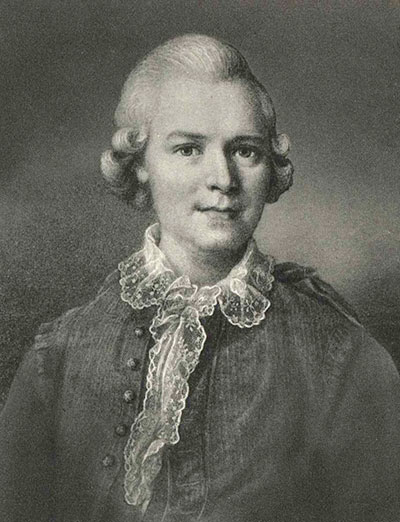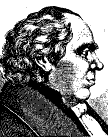|
Carl Stenborg
Carl Stenborg (8 September 1752 – 1 August 1813) was a Swedish opera singer, composer and theatre director. He belonged to the pioneer generation of the Royal Swedish Opera and was regarded as one of the leading opera singers of the Gustavian era. He was a ''hovsångare'' and a member of the Royal Swedish Academy of Music. Life Carl Stenborg was born in Stockholm to actor Petter Stenborg (1719–1781), director of the Stenborg Troupe, and Anna Krüger (1710–1803). Of his brothers, Johan Fredrik Stenborg (1743–1813) studied at Uppsala University and became an official, and Nils Stenborg (d. 1780) became an opera singer. He received a good education, debuted as a concert singer in Riddarhuset in 1766 and was appointed councillor at the Royal Court of Sweden in 1767. This was considered unusual, since his father was not of wealthy means. Carl's mother had been the housekeeper of the nobleman and statesman Adam Horn (1717-1778). Carl or one of his brothers may have been ... [...More Info...] [...Related Items...] OR: [Wikipedia] [Google] [Baidu] |
Tenor
A tenor is a type of male singing voice whose vocal range lies between the countertenor and baritone voice types. It is the highest male chest voice type. Composers typically write music for this voice in the range from the second B below middle C to the G above middle C (i.e. B2 to G4) in choral music, and from the second B flat below middle C to the C above middle C (B2 to C5) in operatic music, but the range can extend at either end. Subtypes of tenor include the ''leggero'' tenor, lyric tenor, spinto tenor, dramatic tenor, heldentenor, and tenor buffo or . History The name "tenor" derives from the Latin word '' tenere'', which means "to hold". As noted in the "Tenor" article at ''Grove Music Online'': In polyphony between about 1250 and 1500, the enor was thestructurally fundamental (or 'holding') voice, vocal or instrumental; by the 15th century it came to signify the male voice that sang such parts. All other voices were normally calculated in relation to the ten ... [...More Info...] [...Related Items...] OR: [Wikipedia] [Google] [Baidu] |
18th-century Swedish Male Actors
The 18th century lasted from 1 January 1701 (represented by the Roman numerals MDCCI) to 31 December 1800 (MDCCC). During the 18th century, elements of Enlightenment thinking culminated in the Atlantic Revolutions. Revolutions began to challenge the legitimacy of monarchical and aristocratic power structures. The Industrial Revolution began mid-century, leading to radical changes in human society and the environment. The European colonization of the Americas and other parts of the world intensified and associated mass migrations of people grew in size as part of the Age of Sail. During the century, slave trading expanded across the shores of the Atlantic Ocean, while declining in Russia and China. Western historians have occasionally defined the 18th century otherwise for the purposes of their work. For example, the "short" 18th century may be defined as 1715–1789, denoting the period of time between the death of Louis XIV of France and the start of the French Revolut ... [...More Info...] [...Related Items...] OR: [Wikipedia] [Google] [Baidu] |
1813 Deaths
Events January–March * January 5 – The Danish state bankruptcy of 1813 occurs. * January 18–January 23, 23 – War of 1812: The Battle of Frenchtown is fought in modern-day Monroe, Michigan between the United States and a British and Native American alliance. * January 24 – The Philharmonic Society (later the Royal Philharmonic Society) is founded in London. * January 28 – Jane Austen's ''Pride and Prejudice'' is published anonymously in London. * January 31 – The Assembly of the Year XIII is inaugurated in Buenos Aires. * February – War of 1812 in North America: General William Henry Harrison sends out an expedition to burn the British vessels at Fort Malden by going across Lake Erie via the Bass Islands in sleighs, but the ice is not hard enough, and the expedition returns. * February 3 – Argentine War of Independence: José de San Martín and his Regiment of Mounted Grenadiers gain a largely symbolic victory against a R ... [...More Info...] [...Related Items...] OR: [Wikipedia] [Google] [Baidu] |
1752 Births
In the British Empire, it was the only year with 355 days (11 days were dropped), as September 3–13 were skipped when the Empire adoption of the Gregorian calendar, adopted the Gregorian calendar. Events January–March * January 1 – The British Empire (except Scotland, which had changed New Year's Day to January 1 in 1600) adopts today as the first day of the year as part of adoption of the Gregorian calendar, which is completed in September: today is the first day of the New Year under the terms of last year's Calendar (New Style) Act 1750, Calendar Act of the British Parliament. * February 10 – Pennsylvania Hospital, the first hospital in the United States, and the first to offer medical treatment to the mentally ill, admits its first patients at a temporary location in Philadelphia. * February 23 – Messier 83 (M83), the "Southern Pinwheel Galaxy" and the first to be cataloged outside the "Local Group" of galaxy, galaxies nearest to Earth's gal ... [...More Info...] [...Related Items...] OR: [Wikipedia] [Google] [Baidu] |
Swedish Operatic Tenors
Swedish or ' may refer to: Anything from or related to Sweden, a country in Northern Europe. Or, specifically: * Swedish language, a North Germanic language spoken primarily in Sweden and Finland ** Swedish alphabet, the official alphabet used by the Swedish language * Swedish people or Swedes, persons with a Swedish ancestral or ethnic identity ** A national or citizen of Sweden, see demographics of Sweden ** Culture of Sweden * Swedish cuisine See also * * Swedish Church (other) * Swedish Institute (other) * Swedish invasion (other) * Swedish Open (other) Swedish Open is a tennis tournament. Swedish Open may also refer to: * Swedish Open (badminton) * Swedish Open (table tennis) * Swedish Open (squash) * Swedish Open (darts) {{disambiguation ... {{disambig Language and nationality disambiguation pages ... [...More Info...] [...Related Items...] OR: [Wikipedia] [Google] [Baidu] |
Johann Christian Friedrich Hæffner
Johann Christian Friedrich Hæffner (2 March 1759 in Oberschönau – 28 May 1833 in Uppsala) was a German-born Swedish composer. Hæffner received his first musical education with the Schmalkalden organist Johann Gottfried Vierling. He studied in Leipzig from 1776, and then worked as a music conductor in theatres in Frankfurt am Main and Hamburg from 1778 to 1780. He moved to Stockholm, Sweden in 1781 at the invitation of the German congregation there (''Tyska kyrkan'') to assume the position of organist, which he held until 1793. The same year (1781) he was employed at the Royal Swedish Opera, Royal Theatre in Stockholm as well as conductor of the orchestra for the Stenborg theatres. In 1786 Hæffner was appointed assistant conductor of the Royal Orchestra (''hovkapellet'') and from 1795 to 1807 he held the post of ''hovkapellmästare'' (Chief conductor of the Swedish Royal Orchestra, Royal Orchestra). He was also an instructor at the Royal Dramatic Training Academy. H ... [...More Info...] [...Related Items...] OR: [Wikipedia] [Google] [Baidu] |
Jeanette Wässelius
Marie Jeanette Wässelius (23 August 1784 – 5 December 1853) was a Swedish opera singer. She is referred to as the leading prima donna of the Royal Swedish Opera in the early 19th-century. She was a '' Hovsångare'' (1815) as well as an associé of the Royal Swedish Academy of Music (1817). She is also known as '' Mamsell Wässelia'' or only ''Wässelia''. Life Jeanette Wässelius was born in Stockholm. She was the daughter of a tapestry manufacturer, and the sister of Justina Casagli. The home was reportedly a poor one. She was enrolled as a student of the Royal Dramatic Training Academy in 1793, where she became the student of Anne Marie Milan Desguillons. As such, she was active as a child actor in the student plays arranged by the school, as well as in minor children's roles of the Opera productions. Career Jeanette Wässelius was contracted as a singer at the Royal Swedish Opera on 1 April 1800. In 1806, the Royal Swedish Opera was (temporarily) closed ... [...More Info...] [...Related Items...] OR: [Wikipedia] [Google] [Baidu] |
Stenborg Theatre
The Stenborg theatre, also called Svenska Komiska Teatern, Komiska Teatern and Munkbroteatern, was a historical Swedish 18th century theatre, active between 1784 and 1799 in Gamla stan in Stockholm. It was the second theatre of Stockholm during the Gustavian age. In 1784-87, before the inauguration of the theatre of Ristell in Bollhuset, it was the only dramatic theatre of the native language in Stockholm. History Background The Stenborg theatre was a continuation of the famous Stenborg Troupe; when the first Swedish national theatre at Bollhuset was closed in 1753–54, half of the troupe performed in various localities in the city under the leadership of Petter Stenborg. When the national stage was re-established by king Gustav III of Sweden in 1773, it did not include the old Stenborg troupe. In 1780, the troupe had finally acquired a proper house to perform in; Eriksbergsteatern, (The Eriksberg Theatre), and in 1781, the leadership was taken over by Petter Stenborg son, C ... [...More Info...] [...Related Items...] OR: [Wikipedia] [Google] [Baidu] |
Oslo
Oslo ( or ; ) is the capital and most populous city of Norway. It constitutes both a county and a municipality. The municipality of Oslo had a population of in 2022, while the city's greater urban area had a population of 1,064,235 in 2022, and the metropolitan area had an estimated population of in 2021. During the Viking Age, the area was part of Viken. Oslo was founded as a city at the end of the Viking Age in 1040 under the name Ánslo, and established as a ''kaupstad'' or trading place in 1048 by Harald Hardrada. The city was elevated to a bishopric in 1070 and a capital under Haakon V of Norway around the year 1300. Personal unions with Denmark from 1397 to 1523 and again from 1536 to 1814 reduced its influence. After being destroyed by a fire in 1624, during the reign of King Christian IV, a new city was built closer to Akershus Fortress and named Christiania in honour of the king. It became a municipality ('' formannskapsdistrikt'') on 1 January 1838. ... [...More Info...] [...Related Items...] OR: [Wikipedia] [Google] [Baidu] |
Copenhagen
Copenhagen ( ) is the capital and most populous city of Denmark, with a population of 1.4 million in the Urban area of Copenhagen, urban area. The city is situated on the islands of Zealand and Amager, separated from Malmö, Sweden, by the Øresund strait. The Øresund Bridge connects the two cities by rail and road. Originally a Vikings, Viking fishing village established in the 10th century in the vicinity of what is now Gammel Strand, Copenhagen became the capital of Denmark in the early 15th century. During the 16th century, the city served as the ''de facto'' capital of the Kalmar Union and the seat of the Union's monarchy, which governed most of the modern-day Nordic countries, Nordic region as part of a Danish confederation with Sweden and Norway. The city flourished as the cultural and economic centre of Scandinavia during the Renaissance. By the 17th century, it had become a regional centre of power, serving as the heart of the Danish government and Military history ... [...More Info...] [...Related Items...] OR: [Wikipedia] [Google] [Baidu] |




